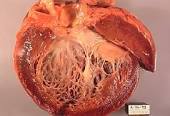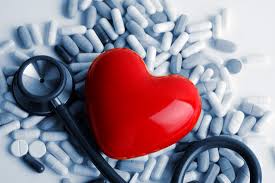
Diagnosed with Cancer? Your two greatest challenges are understanding cancer and understanding possible side effects from chemo and radiation. Knowledge is Power!
Learn about conventional, complementary, and integrative therapies.
Dealing with treatment side effects? Learn about evidence-based therapies to alleviate your symptoms.
Click the orange button to the right to learn more.
- You are here:
- Home »
- Blog »
- side effects ID and prevention »
- Chemotherapy-induced cardiomyopathy
Chemotherapy-induced cardiomyopathy

Chemotherapy-induced cardiomyopathy- Cardiotoxicity of certain chemotherapy regimens is a well-documented adverse event. Chemotherapy regimens that were known to cause short, long-term and late stage damage to the heart was known when I underwent induction therapy and autologous stem cell transplant in 1995.
I was diagnosed with multiple myeloma in early 1994. Like all my other side effects, chemotherapy-induced cardiomyopathy just wasn’t discussed. It never occurred to me that my oncologist would prescribe a series of chemotherapies that could cause permanent damage to my heart.
And no, my conventional oncologic therapies are NOT the reason why alive today to write this blog post 30 years after my original diagnosis of multiple myeloma.
According to Barry Effron, M.D. the University Hospitals cardiologist who consulted on my case in August of 1995, my ejection fraction of 76 was within “normal limits” and therefore there was no need for concern.
During abnormal echocardiograms taken in 2016 and again in 2018 Dr. Effron attributed my heart problems to possible Marfan’s Syndrome. But there was never any mention of long-term and late stage damage done by Dr. Effron’s oncology co-workers in 1995.
During my appointment at the Cleveland Clinic on 1/2/19, Rouhit Moudgil, M.D. onco-cardiologist, had a different opinion. The diagnosis? “chemotherapy-induced cardiomyopathy.” The induction therapy and autologous stem cell transplant in 1995 resulted in atrial fibrillation in 2010 and cardiomyopathy in 2019.
The cardiotoxic effects of doxorubicin, cytoxan, busulfan and melphalan were well known in 1995. There are a number of evidence-based therapies that I could have undergone that may have spared me from the late stage side effect that will probably kill me.
What causes chemotherapy-induced cardiomyopathy?
Chemotherapy-induced cardiomyopathy (CIC) is a condition where cancer treatment, specifically certain types of chemotherapy drugs, can lead to damage to the heart muscle, resulting in cardiomyopathy. The exact mechanisms underlying CIC are not fully understood, and it may vary depending on the specific chemotherapy agents used. However, several potential contributing factors have been identified:
- Direct Toxicity to Heart Cells: Some chemotherapy drugs, particularly anthracyclines (such as doxorubicin, daunorubicin, and epirubicin), are known to have direct toxic effects on the heart muscle cells. These drugs can lead to the formation of free radicals and oxidative stress, causing damage to the cells of the heart muscle.
- Induction of Inflammation: Chemotherapy can trigger an inflammatory response in the body, and inflammation can affect the heart. Chronic inflammation may contribute to the development of cardiomyopathy.
- Disruption of Cellular Signaling: Chemotherapy drugs may interfere with the normal signaling pathways within the heart cells, disrupting their function and potentially leading to cardiomyopathy.
- Genetic Susceptibility: Some individuals may have a genetic predisposition that makes them more susceptible to the cardiotoxic effects of certain chemotherapy drugs. Genetic factors can influence how the body metabolizes and eliminates drugs, affecting their impact on the heart.
- Cumulative Dose: The risk of CIC is often dose-dependent, meaning that higher cumulative doses of certain chemotherapy drugs increase the likelihood of cardiac damage. Monitoring and managing the cumulative dose of cardiotoxic drugs are important in cancer treatment.
- Pre-existing Cardiovascular Conditions: Patients with pre-existing cardiovascular conditions, such as hypertension or pre-existing heart disease, may be more vulnerable to the cardiotoxic effects of chemotherapy.
It’s important to note that not all chemotherapy drugs cause cardiomyopathy, and the risk varies among different agents. Additionally, advancements in cancer treatment and the development of cardioprotective strategies aim to minimize the risk of cardiomyopathy in individuals undergoing chemotherapy.
Close monitoring of cardiac function during and after chemotherapy is a standard practice to detect early signs of cardiac damage and intervene as needed.
Where were you when I needed you Dr. Barry Effram?
Do you have cancer? Did you undergo chemotherapy or radiation that could damage your heart? Do you have chemotherapy-induced cardiomyopathy? How do you manage your heart? Let me know-
David.PeopleBeatingCancer@gmail.com
hang in there,
David Emerson
- Cancer Survivor
- Cancer Coach
- Director PeopleBeatingCancer
Recommended Reading:
- Is “ChemoBrain” “Gray matter reduction” in Breast Cancer?
- Oncologist’s Don’t Explain Blood Cancer Diagnosis, Therapies or Side Effects-
- Cancer Coaches Help Guide Patients-
Cardio-oncology Part I: chemotherapy and cardiovascular toxicity.
“Cancer and cardiovascular disease are the most common causes of mortality in the US, causing approximately 1.2 million deaths annually. The incidence of cancer is expected to increase as the population ages. The prognosis of cancer patients has improved over the last few decades primarily because of newer chemotherapeutic drugs; however, many of these drugs have cardiotoxic side effects.
The short-term cardiovascular toxicities of more established drugs are well described; however, understanding of the underlying pathogenesis is increasing. The delayed cardiotoxic effects of cancer treatments have become an important issue contributing to mortality and morbidity as cancer survivorship increases.
Chemotherapy-induced cardiotoxicity can manifest in many ways, from asymptomatic decreases in left ventricular ejection fraction to congestive heart failure. Hypertension is commonly seen both as a co-morbidity and a side effect of chemotherapy. In this article, we discuss the pathogenesis, scope, presentation and potential prevention of these toxicities.
Cardio-oncology Part II: the monitoring, prevention, detection and treatment of chemotherapeutic cardiac toxicity.
“Cancer treatment has advanced in recent years with new drugs, complex regimes and multiple modalities of treatment; which has improved survival of cancer patients. Cardiotoxicity from chemotherapy is an emerging, important issue.
Currently, echocardiographic evaluation of ejection fraction is the most commonly employed diagnostic tool for detecting chemotherapy-induced cardiotoxicity. However, novel echocardiographic techniques assessing myocardial mechanics using strain imaging can detect earlier changes.
New imaging techniques and biomarkers can risk stratify patients to identify those requiring closer monitoring. Cardiologists collaborating with oncologists can detect and treat cardiovascular chemotherapeutic complications earlier, reducing morbidity and mortality. While cardiac MRI and multigated acquisition nuclear scanning are alternatives, echocardiography has become the mainstream for assessing cardiac function due to its portability, efficiency and low cost. Current recommendations regarding cardiac monitoring of cancer patients are based on expert consensus opinion. There is a need for prospective controlled trials to support specific guidelines.”


